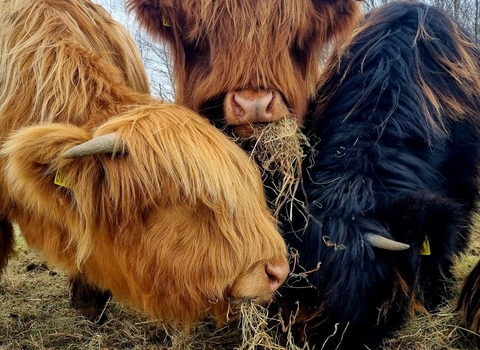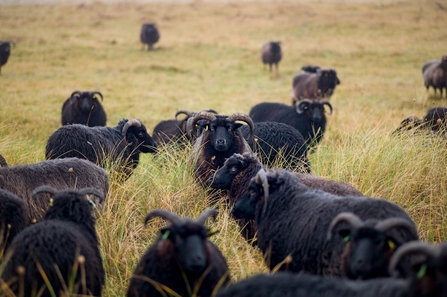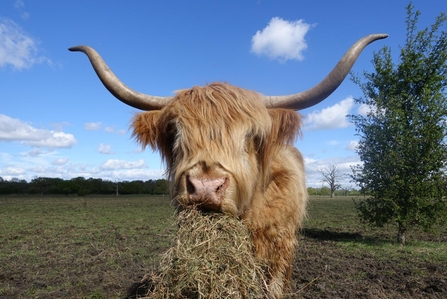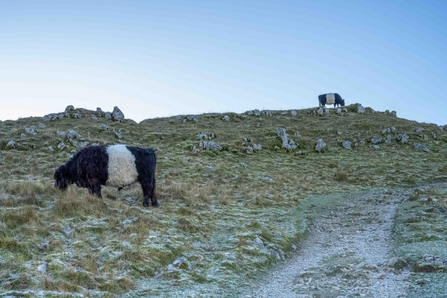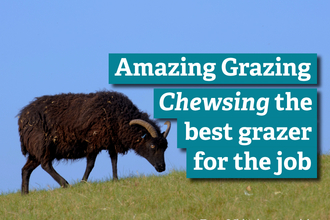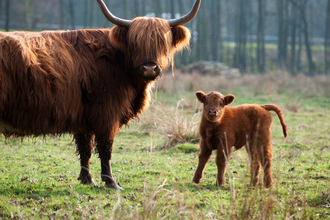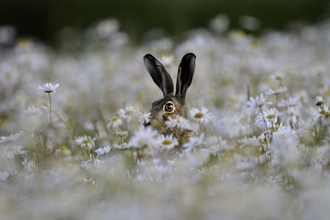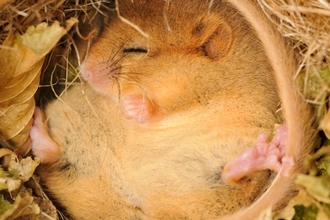What is conservation grazing?
Well, to pin down what conservation grazing is, we first need to explain what we mean by grazing.
Grazing is where animals feed little and often on plants throughout the day, much like someone at a buffet. It is often the most effective way to look after habitats such as grassland and heathland. Grazing can also be used on other habitats like floodplain meadows, wood pasture and coastal marshes. The grazing process helps to keep some areas in nature reserves open, stopping the most competitive plants from taking over and preserving the huge variety of plant species and structure within these habitats.
In other words, conservation grazing is just like normal livestock grazing, but done in a way that helps to improve species diversity. This traditional system replicates the effect of large herbivores which freely roamed the land in the past, such as European bison, aurochs, tarpan, and red and roe deer. Their different methods of grazing would have created a vibrant landscape of interconnecting habitats with a huge range of different plant species – and as a result, lots of different insects and animals.
Why is conservation grazing so important on our reserves?
We are using our modern livestock to replicate this historical process. We use a mix of grazing animals; sheep, cattle, and ponies are used in relatively low numbers on our nature reserves to remove the more competitive plants. This allows the less competitive plants, such as wildflowers, to grow - without grazing pressure, competitive grasses often grow tall, shading wildflowers and preventing them from being able to access sunlight.
Grazing animals also remove the thatch (dead grass and leaves) that gets trapped between the grasses and flowers covering the soil. This is done through a combination of eating and trampling disturbance. By removing the thatch, grazing animals create bare soil patches which are necessary for wildflower seeds to germinate and grow. Because this is also done gradually, rather than all at once through mechanical means like mowing, we can get results that can’t be replicated with mowers. For example, a mower will mow a continuous line within a grassland whereas a cow will walk that same line but only remove selected tufts of grass. Wildlife species are therefore given the chance to move to other areas within the habitat.
How do we decide what animals to use?
We are lucky to have a variety of different livestock breeds to choose from, each with their own plus points. Often, it is important to look at what sort of browser our livestock is; browsing refers to what type of plants the animal will feed. A generalist browser can deal with coarse grasses, scrub, and even saplings, while selective browsers will be more suited to wildflower-rich grasslands.
The Trust predominantly uses native breeds in our conservation grazing as they tend to be more suited to UK conditions - such as harsh weather, wet grassland, steep slopes, and low-quality grazing. Our conservation grazing livestock spend all their time outside once fully grown, even during winter. We have chosen hardy breeds that are still able to thrive through adverse conditions – they tolerate losing weight over winter as part of their natural growing cycle. They then put weight on in the spring and summer months when the grass is lush and green.
By using hardy, native grazing animals to manage growth on our reserves, staff and volunteers can spend their time on other projects. This means that we can undertake more essential conservation work to ensure a Yorkshire that is abundant in wildlife.

